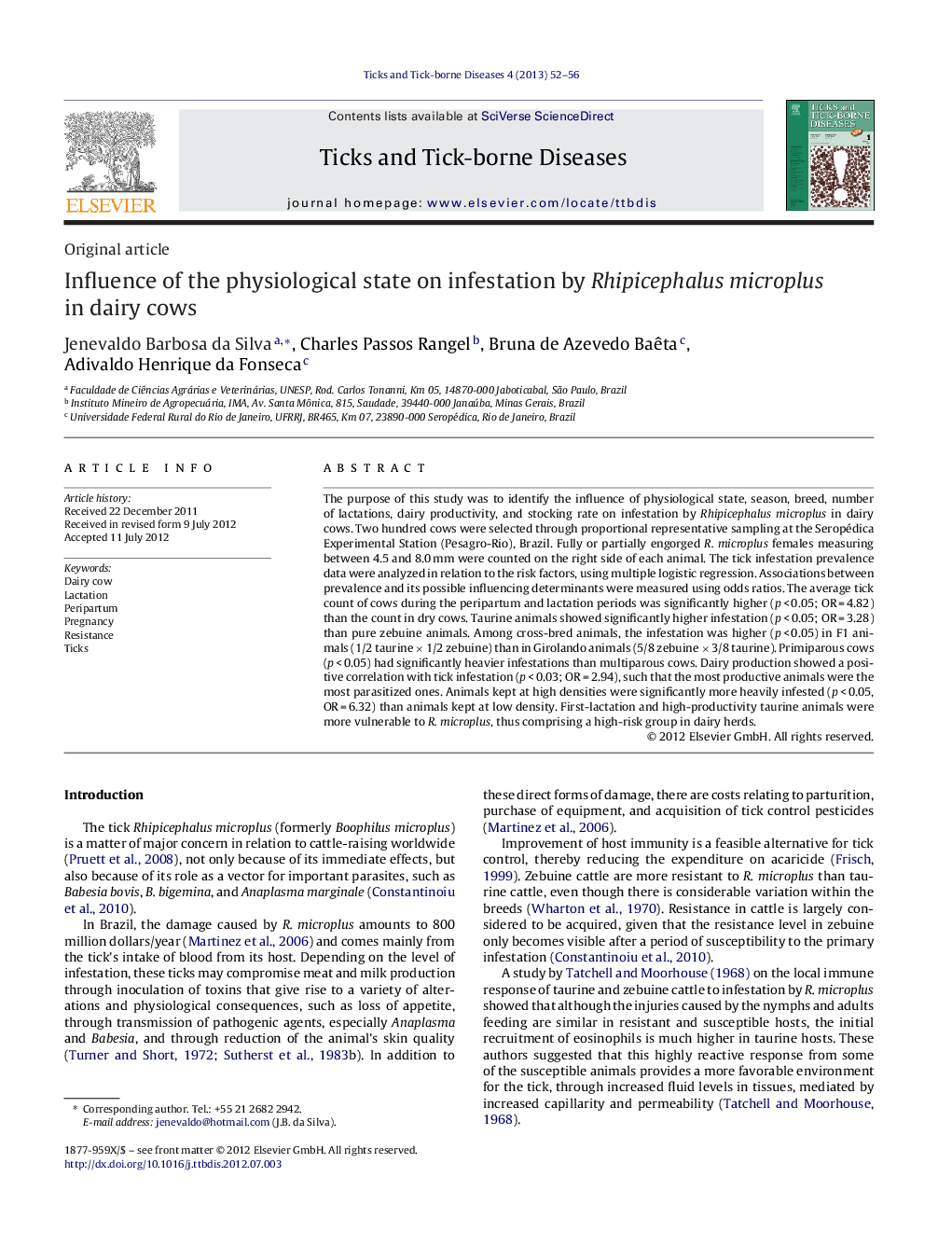| کد مقاله | کد نشریه | سال انتشار | مقاله انگلیسی | نسخه تمام متن |
|---|---|---|---|---|
| 2474229 | 1555965 | 2013 | 5 صفحه PDF | دانلود رایگان |

The purpose of this study was to identify the influence of physiological state, season, breed, number of lactations, dairy productivity, and stocking rate on infestation by Rhipicephalus microplus in dairy cows. Two hundred cows were selected through proportional representative sampling at the Seropédica Experimental Station (Pesagro-Rio), Brazil. Fully or partially engorged R. microplus females measuring between 4.5 and 8.0 mm were counted on the right side of each animal. The tick infestation prevalence data were analyzed in relation to the risk factors, using multiple logistic regression. Associations between prevalence and its possible influencing determinants were measured using odds ratios. The average tick count of cows during the peripartum and lactation periods was significantly higher (p < 0.05; OR = 4.82) than the count in dry cows. Taurine animals showed significantly higher infestation (p < 0.05; OR = 3.28) than pure zebuine animals. Among cross-bred animals, the infestation was higher (p < 0.05) in F1 animals (1/2 taurine × 1/2 zebuine) than in Girolando animals (5/8 zebuine × 3/8 taurine). Primiparous cows (p < 0.05) had significantly heavier infestations than multiparous cows. Dairy production showed a positive correlation with tick infestation (p < 0.03; OR = 2.94), such that the most productive animals were the most parasitized ones. Animals kept at high densities were significantly more heavily infested (p < 0.05, OR = 6.32) than animals kept at low density. First-lactation and high-productivity taurine animals were more vulnerable to R. microplus, thus comprising a high-risk group in dairy herds.
Journal: Ticks and Tick-borne Diseases - Volume 4, Issues 1–2, February 2013, Pages 52–56